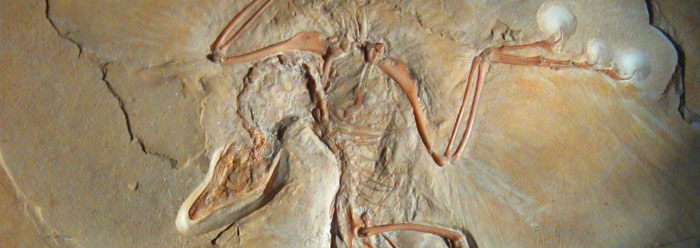The fossilized bird known as Archaeopteryx has had quite a history of identity crises. Researchers once classified it as a "missing link" between dinosaurs and birds. It was considered to be an ancient bird, then changed to a dinosaur, and now it's supposed to be a bird again. So, what is it?
Nature News reported in July that an analysis of fossil traits "suggests that Archaeopteryx is not a bird at all," but instead more closely resembled dinosaurs.1 ICR News responded at the time that because "it had core features that define birds, such as flight feathers, wings, perching feet, and a wishbone… Archaeopteryx is still just an extinct bird."2
Textbooks and museums still teach that Archaeopteryx is an evolutionary transition from reptiles. But even if its classification waffles again, it is disqualified as an evolutionary ancestor for birds by the fact that scientists found a crow-size bird and extinct four-winged birds in rock layers designated to be below those containing Archaeopteryx.3,4
A team of Australian scientists recently performed another trait analysis, but this one included more body features and slightly different underlying assumptions than the previous study. Publishing in the Royal Society's Biology Letters, the researchers wrote that Archaeopteryx's assignment to a dinosaur group earlier this year "was acknowledged to be weakly supported."5
They constructed new cladograms that pictured Archaeopteryx with birds, and not with any dinosaurs, with a caption that reads, "Archaeopteryx robustly reinstated as the most basal bird."5
After generations of experts had concurred that it was a bird, why would one group suggest that Archaeopteryx should be reclassified as some kind of a dinosaur? And why would another group, using similar techniques, pull the plug on that assessment so soon afterward? After all, they both have access to the same data.
The difference must not be found in the fossil data, but in the methods the researchers used to analyze them. And those methods—called "cladistics"—assume evolutionary ancestry before the data are even approached.6
In fact, even the report's title assumes evolution, referring to Archaeopteryx as "primitive." But none of its features are primitive, just unique. However, in order to portray Archaeopteryx as the progenitor of other birds, it must be labeled "primitive," whether or not its anatomy actually reveals primitive features.
Since the fossil has the same core features as modern birds, it makes sense to say that Archaeopteryx was a bird. And based on the quality of its preservation as a fossil, this particular creature appears to have died in a watery catastrophe, like Noah's Flood from just thousands of years ago.7
References
- Kaplan, M. Archaeopteryx no longer first bird. Nature News. Posted on nature.com July 27, 2011, accessed October 27, 2011.
- Thomas, B. Early Bird Gets the Boot: Researchers Reclassify Archaeopteryx. ICR News. Posted on icr.org August 5, 2011, accessed October 27, 2011.
- Beardsley, T. 1986. Fossil bird shakes evolutionary hypotheses. Nature. 322 (6081): 677.
- Xu, X. et al. 2011. An Archaeopteryx-like theropod from China and the origin of Avialae. Nature. 475 (7357): 465-470.
- Lee, M. S. Y. and T. H. Worthy. Likelihood reinstates Archaeopteryx as a primitive bird. Biology Letters. Published online before print October 26, 2011.
- In the following lay definition, evolution is entirely assumed: "Cladistic Analysis is a tool used by paleontologists and biologists to understand the tree of life. It is based on a straightforward principal. If you are considering more than one possible family tree, the one that accounts for the most observed characters with the fewest evolutionary steps is probably the accurate one." National Center for the Study of Cladistic Existentialism fact sheet. Posted on ncsce.org, accessed October 27, 2011.
- Thomas, B. Archaeopteryx Fossil Shows 'Striking' Tissue Preservation. ICR News. Posted on icr.org May 19, 2010, accessed October 27, 2011.
* Mr. Thomas is Science Writer at the Institute for Creation Research.
Article posted on November 8, 2011.




